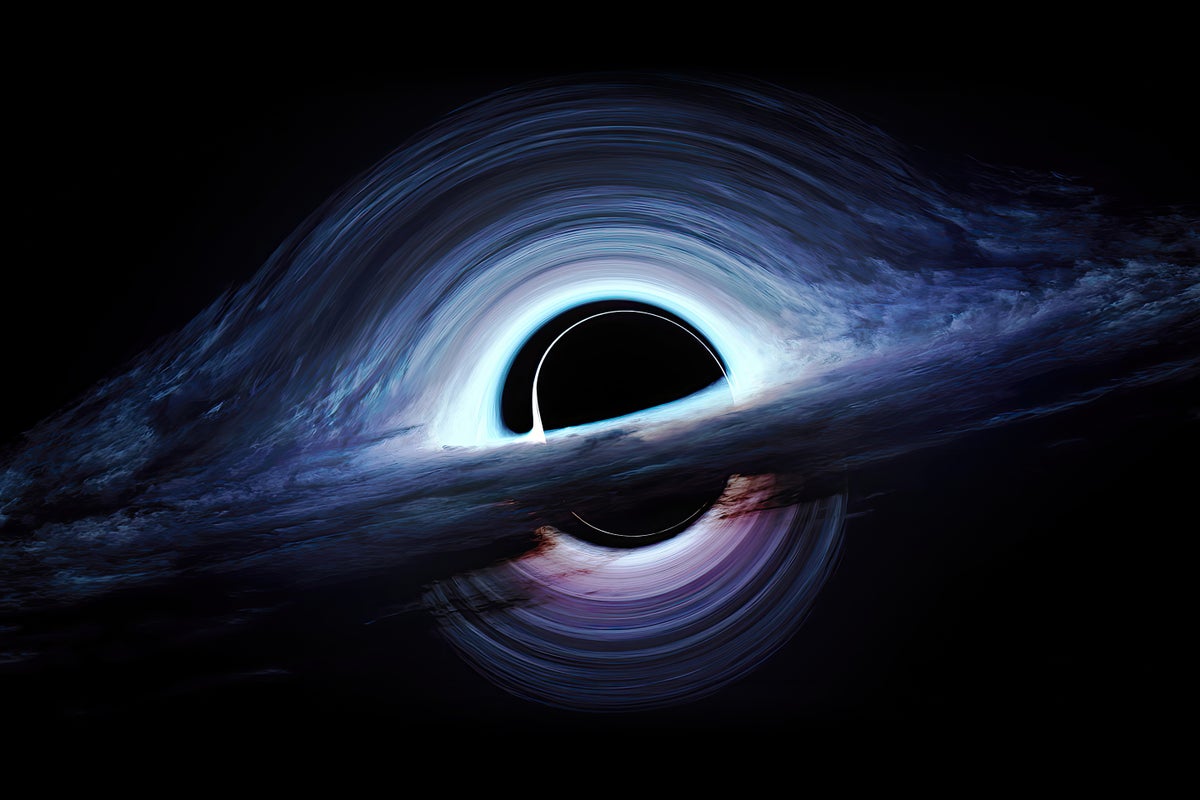The universe’s hidden mass may be made of black holes, which could wobble the planets of the solar system when they pass by
Black holes the size of an atom that contain the mass of an asteroid may fly through the inner solar system about once a decade, scientists say. Theoretically created just after the big bang, these examples of so-called primordial black holes could explain the missing dark matter thought to dominate our universe. And if they sneak by the moon or Mars, scientists should be able to detect them, a new study shows.
…
If primordial black holes are responsible for dark matter, they probably zip through the solar system about every 10 years, a new study found. If one of these black holes comes near a planet or large moon, it should push the body off course enough to be measurable by current instruments. “As it passes by, the planet starts to wobble,” says Sarah R. Geller, a theoretical physicist now at the University of California, Santa Cruz, and co-author of the study, which was published on September 17 in Physical Review D.* “The wobble will grow over a few years but eventually it will damp out and go back to zero.”



What if it hits instead of passing by?
The article links to another article describing the effect of getting hit by a primordial black hole. At their typical assumed speed they’d pass through a planet without stopping, but the momentary distortion caused by their passage would be enough to kill a person in its path.
Here the relevant part:
What if this is what causes strokes? Black holes yeeting through your head and snatching a few grams of grey matter, causing a bleed and stroke.
We’re estimating once a decade. Not thousands a day.
Could the estimates be wildly off? Yes. But that’s still pretty wild conjecture lol.
We already know what causes strokes.
They compute the odds of a human ever getting hit by a PBH in the lifetime of the solar system, and it’s… considerably less than the odds of getting a stroke.
Everyone who ever had a stroke has just been extremely unlucky
New fear unlocked.
Honestly, I have no idea lol.
They compare the mass of it to an asteroid, but that’s a pretty big range of possible masses. Assuming it’s the mass of a small, “survivable” asteroid, it wouldn’t burn up in the atmosphere since it’s atom sized.
If a regular asteroid of the same mass is like a sledgehammer, I would imagine the similarly-massed, atomic-sized black hole would be like a bullet?
But I’m just throwing stuff at the wall with that guess.
It’s dark matter, there shouldn’t be friction with the air like with mass made of regular atoms, right? Nor with the ground. I think it would be more like a bullet but it would zip right through the whole planet without resistance.
Probably the same as an asteroid of equivalent mass at impact.
Except an asteroid stops when it impacts the surface. Since a microscopic black hole would absorb the atoms directly in its path, there would be no “impact” where it imparts all its kinetic energy to the surface.
I think the asteroid would transfer all of its kinetic and potential energy coming to a halt. A dark matter thing shouldn’t even be slowed much.
Removed by mod